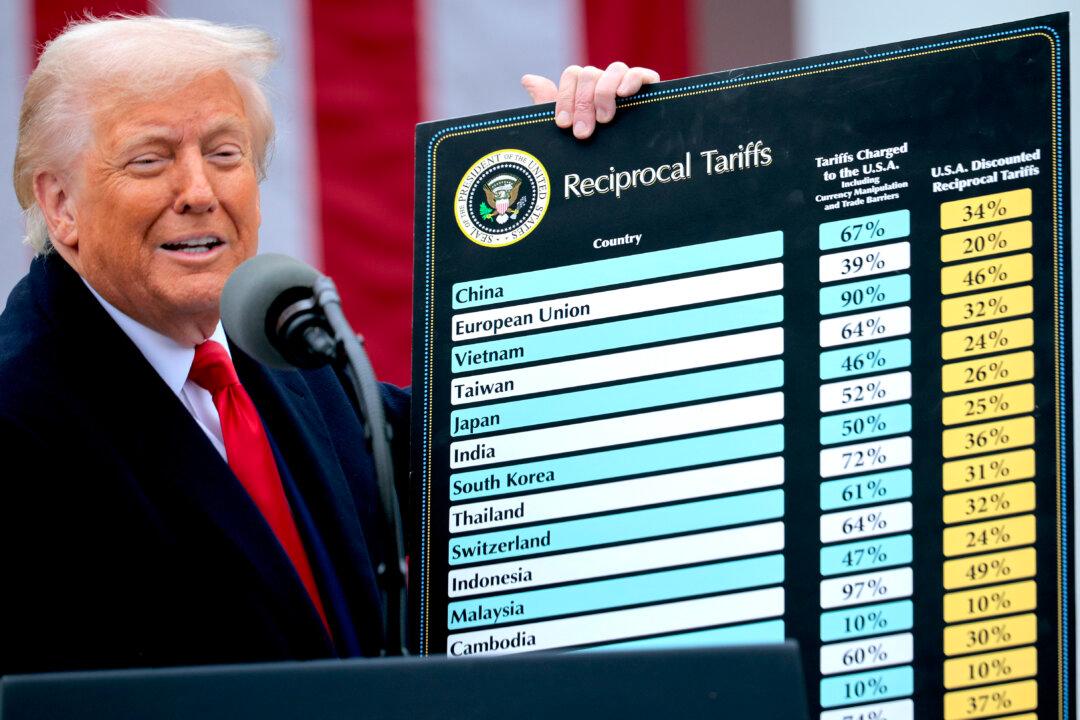WASHINGTON—Contrary to standard Democratic talking points, rich people in high-tax states such as New York, New Jersey, and California will likely pay higher federal taxes under the new tax code than under the old law.
Under the previous tax code, individuals who itemized their deductions were able to deduct all their SALT against their federal taxable income.
A provision of the 2017 Tax Cuts and Jobs Act (TCJA), however, limits individual’s deduction for SALT payments to $10,000 a year ($5,000 for a married person filing a separate return). Any state and local individual income or property tax payments in excess of that amount are no longer deductible by individual taxpayers. Businesses, however, can deduct state and local taxes with no limit.
Repealing Cap Benefits Rich
Blue state Democrats insist that the SALT cap is unfair to their residents and consider it a deliberate political assault. According to a report by the Urban-Brookings Tax Policy Center, however, repealing the SALT deduction cap would mostly benefit high-income taxpayers.More than a quarter of the benefit in repealing the cap would go to the top 0.1 percent of income-earners, the report shows. And the top 1 percent of households, those making over $755,000, would receive more than 56 percent of the benefit.
“Upper-income households would do especially well if the SALT cap is killed,” the report said, because the new tax bill also significantly weakened the individual Alternative Minimum Tax and repealed the limitation on itemized deductions. Both were used in the past to limit the federal tax subsidy for state and local tax payments by high-income households.
On average, New York millionaires pay about $500,000 in SALT per year, whereas millionaires in Texas pay about $70,000, according to Rachel Greszler, a research fellow at the Heritage Foundation.
With the highest federal income tax rate being approximately 40 percent, the effect of the SALT deduction on federal returns meant that individual filers could save up to 40 cents in federal taxes for every dollar of state taxes paid.
Hence, if the cap were repealed, federal taxpayers would give the New York millionaires roughly a $200,000 break on their federal taxes and give the Texas millionaires roughly a $28,000 break, Greszler said at a Heritage Foundation event on Mar. 18.
Republicans argue the state and local tax deduction mostly benefits wealthy individuals and is unfair to residents in lower-tax states.
According to Adam Michel, senior policy analyst at the Heritage Foundation, the SALT deduction makes people in low-tax states such as Tennessee and Texas subsidize high-tax states like California and New York.
“Capping the SALT deduction at $10,000 creates an incredible opportunity for states to reform their tax systems and revise the detrimental impact that the subsidy was having on states around the country,” he said at The Heritage Foundation event.
Michel also rejected claims that the SALT cap is a political tool to punish blue states. He said that it simply aimed at getting rid of “the subsidy that previously existed.”
Taxes Affect Migration and Growth
New York has one of the highest state and local tax rates in the country. The state lost more than 1.3 million residents over the past decade to more economically competitive states, according to the Rich States, Poor States report. States that lowered their corporate and personal income tax rates have witnessed benefits such as higher in-migration and economic growth, the report said.Michel said the highly progressive tax system isn’t only detrimental to a state’s economy but also to its budget. One wealthy resident can move out of the state, putting the entire state budget at risk, he said.
The Tax Cuts and Jobs Act, which was signed into law on Dec. 22, 2017, reduced individual tax rates, narrowed itemized deductions, and nearly doubled the standard deduction for individuals. It also doubled the child tax credit.





